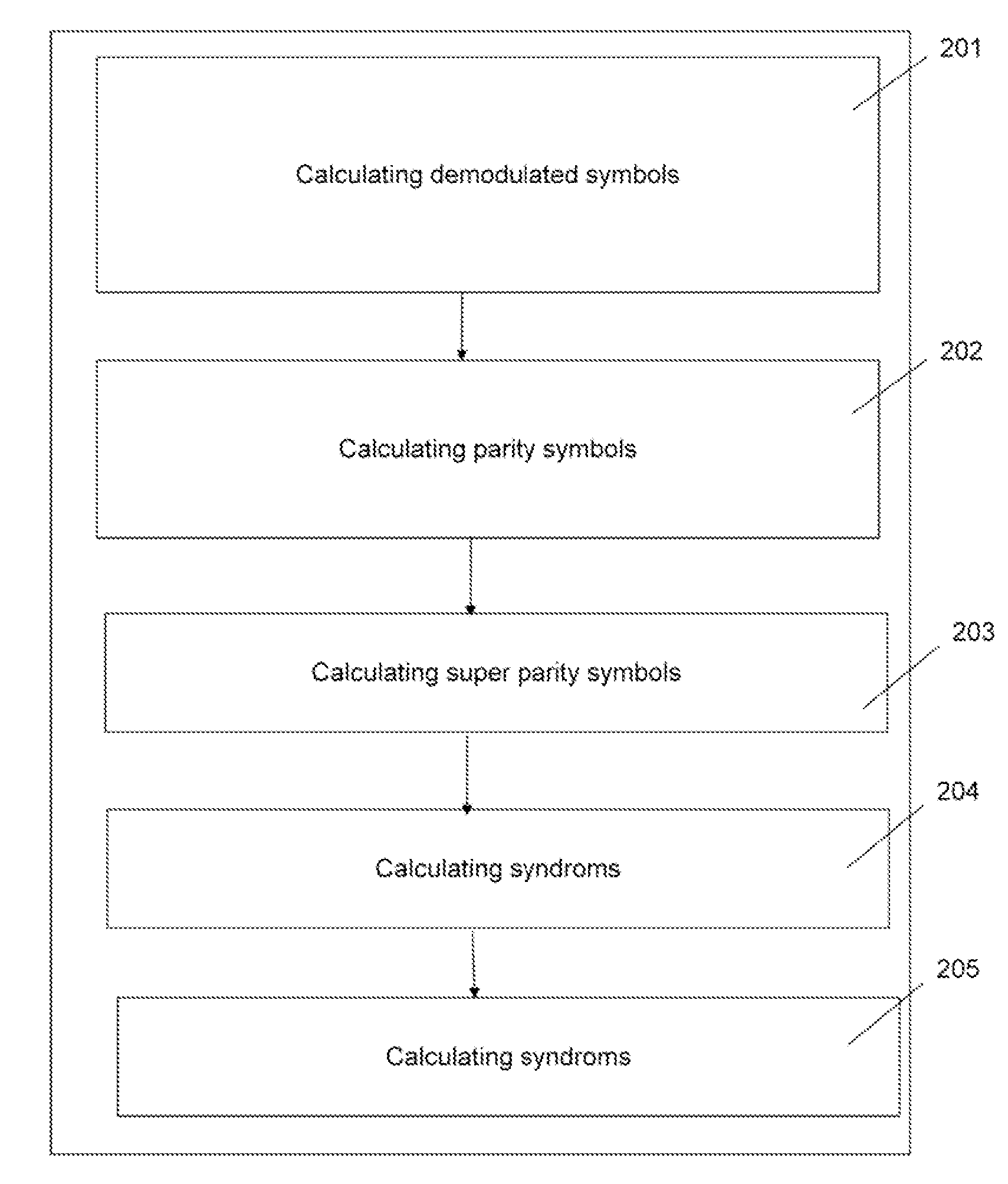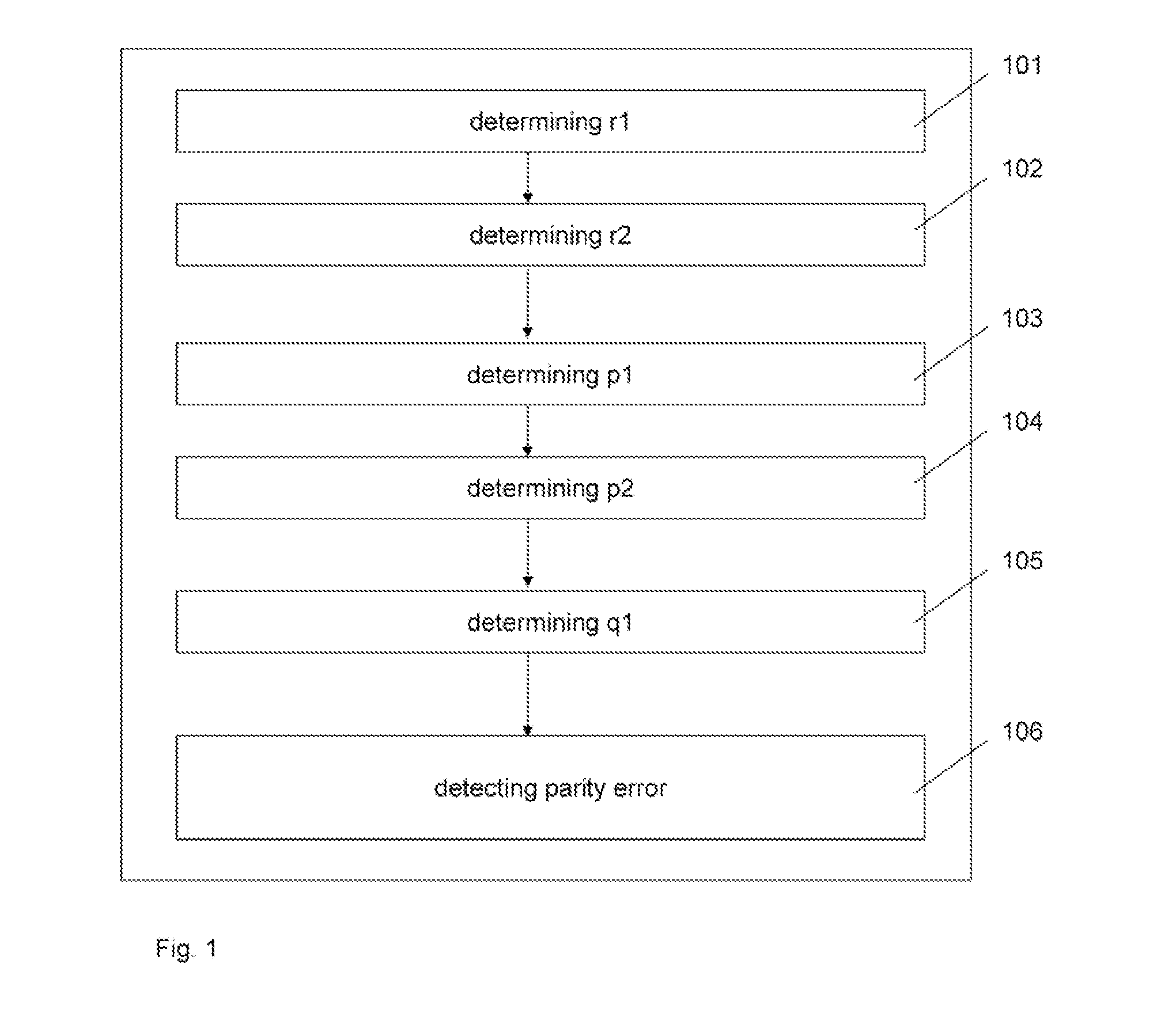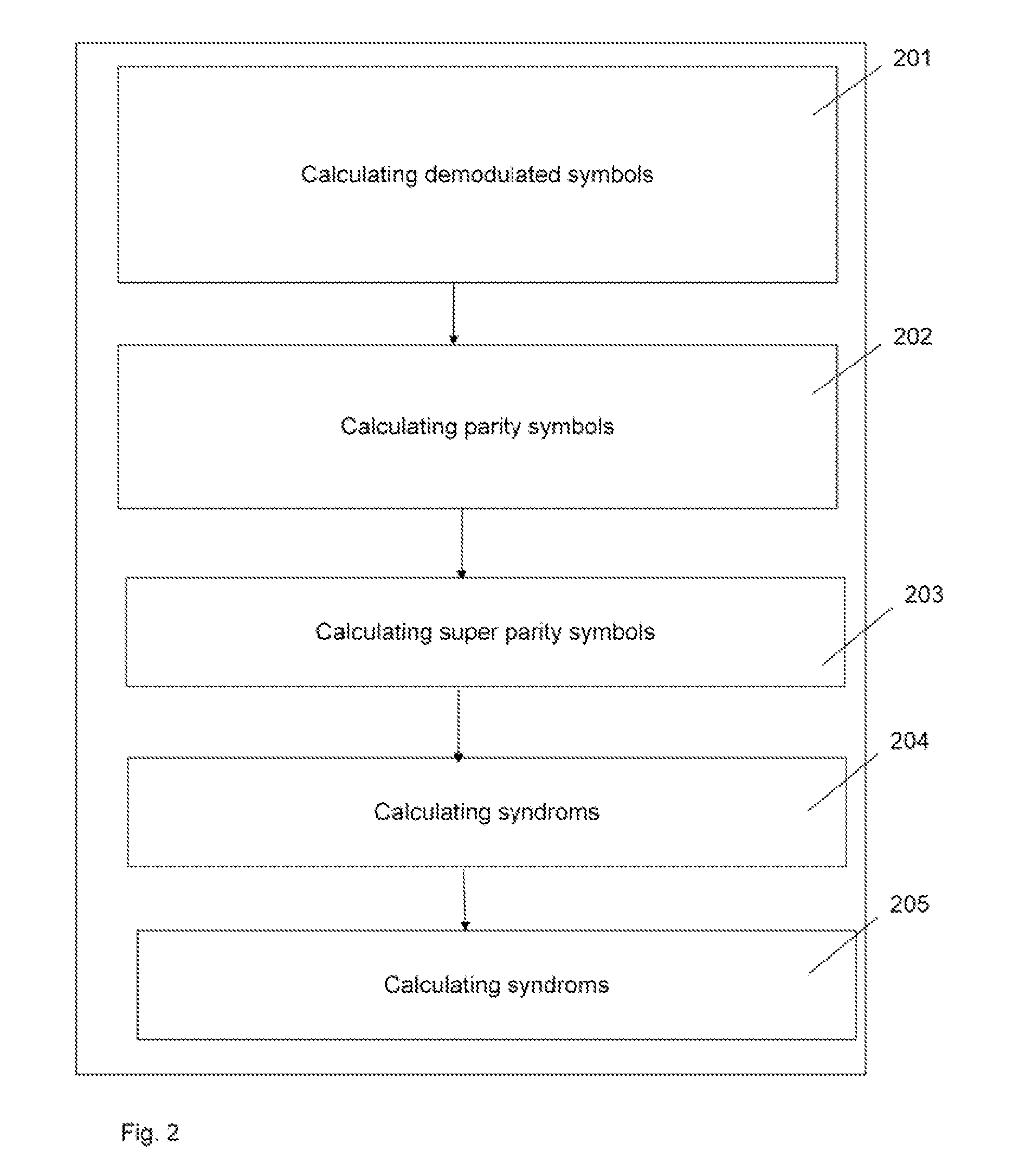Method and apparatus for detecting a parity error in a sequence of dqpsk symbols of a digital transmission system
a digital transmission system and parity error technology, applied in the field of error detection in dqpsk (differential quadrature phase shift keying) communication systems, can solve the problems of differential decoding, increased power consumption, and increased noise in transmission, so as to reduce the complexity of dsp and reduce power consumption, the effect of less gate coun
- Summary
- Abstract
- Description
- Claims
- Application Information
AI Technical Summary
Benefits of technology
Problems solved by technology
Method used
Image
Examples
Embodiment Construction
[0062]FIG. 1 shows a block diagram of a method for detecting a parity error in a sequence of DQPSK symbols according to an implementation form. The method comprises a first step 101“determining r1 as parity between x(n−2) and x(n−1)” and a second step 102“determining r2 as parity between x(n−1) and x(n)”, wherein x(n−2), x(n−1), x(n) are contiguous symbols of a sequence of DQPSK symbols. According to this implementation form, step 101 is performed before step 102. According to an other implementation form, step 102 is performed before step 101. The method comprises a third step 103“determining p1 as parity between x(n−k) and x(n)” and a fourth step 104“determining p2 as parity between x(n−k−m) and x(n−k)”, wherein x(n), x(n−k), x(n−k−m) are non-contiguous symbols of the sequence of DQPSK symbols. According to this implementation form, step 103 is performed before step 104. According to another implementation form, step 104 is performed before step 103. According to this implementati...
PUM
 Login to View More
Login to View More Abstract
Description
Claims
Application Information
 Login to View More
Login to View More - R&D
- Intellectual Property
- Life Sciences
- Materials
- Tech Scout
- Unparalleled Data Quality
- Higher Quality Content
- 60% Fewer Hallucinations
Browse by: Latest US Patents, China's latest patents, Technical Efficacy Thesaurus, Application Domain, Technology Topic, Popular Technical Reports.
© 2025 PatSnap. All rights reserved.Legal|Privacy policy|Modern Slavery Act Transparency Statement|Sitemap|About US| Contact US: help@patsnap.com



